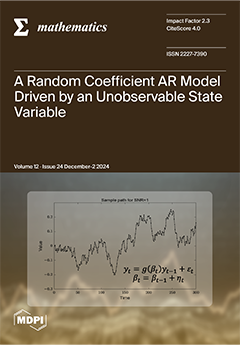This study examines the spinor representations of
(tangent and normal),
(normal and binormal),
(tangent and binormal) and
(tangent, normal and binormal)–Smarandache curves in three-dimensional Euclidean space
. Spinors are complex column vectors and move on Pauli spin
[...] Read more.
This study examines the spinor representations of
(tangent and normal),
(normal and binormal),
(tangent and binormal) and
(tangent, normal and binormal)–Smarandache curves in three-dimensional Euclidean space
. Spinors are complex column vectors and move on Pauli spin matrices. Isotropic vectors in the
complex vector space form a two-dimensional surface in the
complex space. Additionally, each isotropic vector in
space corresponds to two vectors in
space, called spinors. Based on this information, our goal is to establish a relationship between curve theory in differential geometry and spinor space by matching a spinor with an isotropic vector and a real vector generated from the vectors of the Frenet–Serret frame of a curve in three-dimensional Euclidean space. Accordingly, we initially assume two spinors corresponding to the Frenet–Serret frames of the main curve and its (
,
,
and
)–Smarandache curves. Then, we utilize the relationships between the Frenet frames of these curves to examine the connections between the two spinors corresponding to these curves. Thus, we give the relationships between spinors corresponding to these Smarandache curves. For this reason, this study creates a bridge between mathematics and physics. This study can also serve as a reference for new studies in geometry and physics as a geometric interpretation of a physical expression.
Full article





